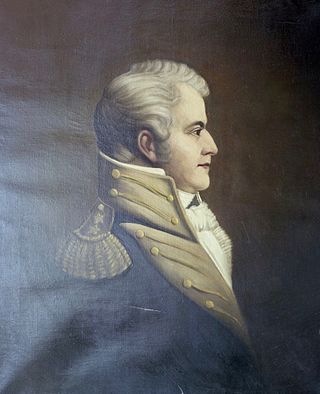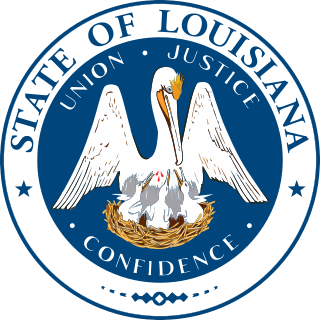Related Research Articles

The governor of Georgia is the head of government of Georgia and the commander-in-chief of the state's military forces. The governor also has a duty to enforce state laws, the power to either veto or approve bills passed by the Georgia Legislature, and the power to convene the legislature. The current governor is Republican Brian Kemp, who assumed office on January 14, 2019.

The Colorado General Assembly is the state legislature of the State of Colorado. It is a bicameral legislature consisting of the Senate and House of Representatives that was created by the 1876 state constitution. Its statutes are codified in the Colorado Revised Statutes (C.R.S.). The session laws are published in the Session Laws of Colorado.

The Vermont General Assembly is the legislative body of the state of Vermont, in the United States. The Legislature is formally known as the "General Assembly", but the style of "Legislature" is commonly used, including by the body itself. The General Assembly is a bicameral legislature, consisting of the 150-member Vermont House of Representatives and the 30-member Vermont Senate. Members of the House are elected by single and two-member districts. 68 districts choose one member, and 41 choose two, with the term of service being two years. The Senate includes 30 Senators, elected by seven single-member and nine multi-member districts with two or three members each. It is the only state legislative body in the United States in which a third party has had continuous representation and been consecutively elected alongside Democrats and Republicans.

The Georgia General Assembly is the state legislature of the U.S. state of Georgia. It is bicameral, consisting of the Senate and the House of Representatives.

The New Jersey Legislature is the legislative branch of the government of the U.S. state of New Jersey. In its current form, as defined by the New Jersey Constitution of 1947, the Legislature consists of two houses: the General Assembly and the Senate. The Legislature meets in the New Jersey State House, in the state capital of Trenton.

The lieutenant governor of North Carolina is the second-highest elected official in the U.S. state of North Carolina and is the only elected official to have powers in both the legislative and executive branches of state government. A member of the North Carolina Council of State, the lieutenant governor serves a four-year term with a two consecutive term limit. The current lieutenant governor is Mark Robinson, a Republican, who has held the office since 2021. The Constitution of North Carolina designates the lieutenant governor the ex officio president of the State Senate and a member of the State Board of Education. They are also required to serve as acting governor of the state in the event of the governor's absence, and assume the governorship in the event it becomes vacant.

Benjamin Smith was the 16th governor of North Carolina from 1810 to 1811.

The Colorado State Senate is the upper house of the Colorado General Assembly, the state legislature of the US state of Colorado. It is composed of 35 members elected from single-member districts, with each district having a population of about 123,000 as of the 2000 census. Senators are elected to four-year terms, and are limited to two consecutive terms in office. Senators who are term-limited become eligible to run again after a one-term respite.

Archibald Stobo Bulloch was an American lawyer, military officer and politician who served as the seventh governor of Georgia from 1776 to 1777. Born in the Province of South Carolina, Bulloch fought in the Georgia Militia during the American Revolution, and was also a great-grandfather of Martha Bulloch Roosevelt, and great-great-grandfather of Theodore Roosevelt, the 26th President of the United States.

The Lieutenant Governor and Speaker of the Senate of Tennessee is the presiding officer of the Tennessee Senate and first in line in the succession to the office of governor of Tennessee in the event of the death, resignation, or removal from office through impeachment and conviction of the governor of Tennessee.

The Tennessee Senate is the upper house of the U.S. state of Tennessee's state legislature, which is known formally as the Tennessee General Assembly.
New York is a Democratic stronghold and is considered one of the "Big Three" Democratic strongholds alongside California and Illinois. The following table indicates the party of elected officials in the U.S. state of New York:

Thomas Collins was an American planter and politician from Smyrna, in Kent County, Delaware. He was an officer of the Delaware militia during the American Revolution, and served in the Delaware General Assembly and as President of Delaware.

The Georgia Republican Party is the affiliate of the Republican Party in the U.S. state of Georgia and one of the two major political parties. It is currently the dominant party in the state and is chaired by Joshua McKoon.
The Supreme Executive Council of the Commonwealth of Pennsylvania was the collective directorial executive branch of the Pennsylvanian state government between 1777 and 1790. It was headed by a president and a vice president. The best-known member of the Council was Benjamin Franklin, who also served as its sixth president.

The Louisiana State Legislature is the state legislature of the U.S. state of Louisiana. It is a bicameral body, comprising the lower house, the Louisiana House of Representatives with 105 representatives, and the upper house, the Louisiana State Senate with 39 senators. Members of each house are elected from single-member districts of roughly equal populations.

The Government of Tennessee is organized under the provisions of the 1870 Constitution of Tennessee, first adopted in 1796. As set forth by the state constitution, administrative influence in Tennessee is divided among three branches of government: executive, legislative, and judicial.

Epworth by the Sea is an 83-acre Christian conference and retreat center in Georgia, United States. It is used for Methodist-based events. It is located on the banks of the Frederica River, north of Gascoigne Bluff on Saint Simons Island, Georgia. The center was named "Epworth by the Sea" in honor of Epworth, the boyhood home of Charles and John Wesley, founders of Methodism. It is owned and operated by the South Georgia Conference of the United Methodist Church. Epworth is located on part of Hamilton Plantation which was purchased on October 29, 1949. It opened to the public in 1950, under the leadership of Bishop Arthur James Moore. Moore, from Georgia, was an elected bishop in the Methodist Episcopal Church, and also a leader of the Atlanta Area of the Methodist Church. At the start, the center featured only a few rural camp facilities and old plantation buildings. Epworth's stated mission is "to provide a Christian place for worship, study and fellowship."

The 1st New York State Legislature, consisting of the New York State Senate and the New York State Assembly, met from September 9, 1777, to June 30, 1778, during the first year of George Clinton's governorship, first at Kingston and later at Poughkeepsie.
References
- 1 2 3 "Georgia General Assembly".
- ↑ "Georgia". Archived from the original on 2012-11-05. Retrieved 2013-02-02.